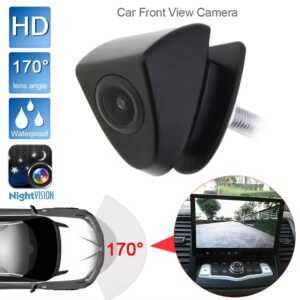In today¨s automotive industry, vehicle safety and security have become paramount. Many car owners and fleet operators rely on advanced technologies like vehicle cameras and vehicle camera systems to enhance their driving experience. While these two terms are often used interchangeably, they refer to different aspects of automotive surveillance and safety.In the past ten years, commercial vehicle camera Defeated many competitors, courageously advanced in the struggle, and polished many good products for customers. https://szdfpls.com
What is a Vehicle Camera?
A vehicle camera is a standalone device installed in a vehicle to capture video footage from specific angles, such as the front, rear, or sides. Typically, these cameras provide real-time visuals or recorded footage to help drivers navigate blind spots, park more easily, and avoid obstacles. Modern vehicle cameras, like those from vehicle camera manufacturers featured on Nanma¨s website, often use CCD or AHD technology for high-quality image resolution. They can be integrated into various parts of the vehicle, including the bumper, mirrors, or logo areas, offering an unobtrusive way to boost safety.
Vehicle cameras are primarily used for specific tasks, such as reversing assistance, front view monitoring, or blind spot detection. However, they function as independent units and may not be connected to a larger network or system.
What is a Vehicle Camera System?
A vehicle camera system, on the other hand, is a more comprehensive setup that integrates multiple vehicle cameras into one cohesive system. This system may include front, rear, and side cameras, all feeding video footage into a central display unit, such as a dashboard monitor. In more advanced vehicle camera systems, the video feeds can be integrated with other safety features, such as parking sensors, collision alerts, or 360-degree bird¨s-eye view displays.
Manufacturers like Nanma, who specialize in vehicle camera systems, offer products designed for enhanced functionality, providing a full spectrum of visibility around the vehicle. These systems are particularly useful for larger vehicles like trucks, buses, or fleet vehicles, where driver visibility is often compromised due to the vehicle¨s size.
Key Differences
Functionality: A vehicle camera functions independently, focusing on a single task (e.g., rearview monitoring), while a vehicle camera system integrates multiple cameras for a full-view solution.
Components: A vehicle camera is a single component, whereas a vehicle camera system includes several cameras and possibly additional technology such as sensors and centralized display units.
Applications: Vehicle camera systems are ideal for comprehensive surveillance and safety, especially for larger vehicles or those used in commercial fleets. In contrast, a single vehicle camera is more suited for specific use cases like parking assistance.
Conclusion
Both vehicle cameras and vehicle camera systems play an essential role in modern driving safety, but they serve different needs. While a vehicle camera provides a focused, single-task solution, a vehicle camera system offers a broader and more integrated approach to vehicle monitoring. By choosing the right technology from reliable vehicle camera manufacturers, like those offered at Nanma, drivers and fleet managers can enhance safety and efficiency on the road.